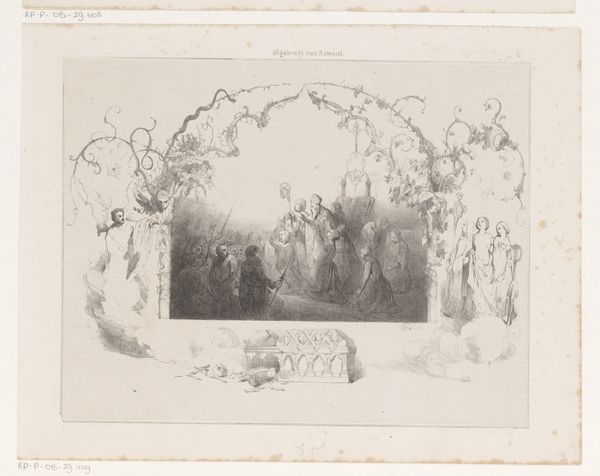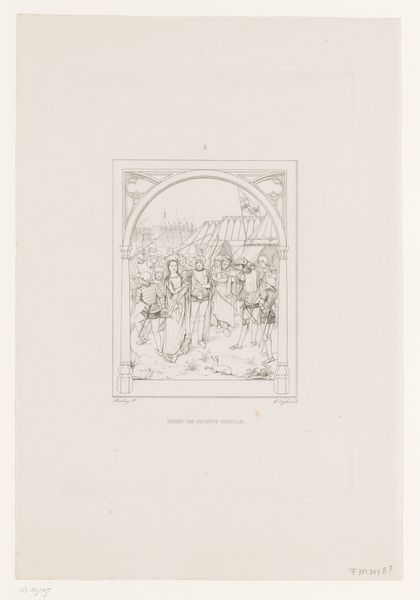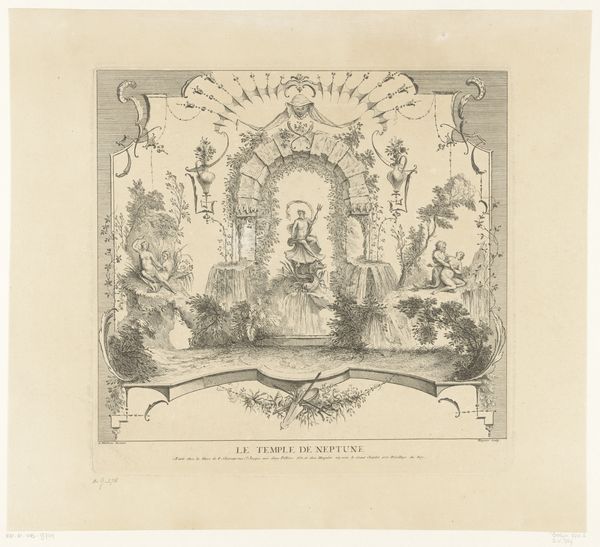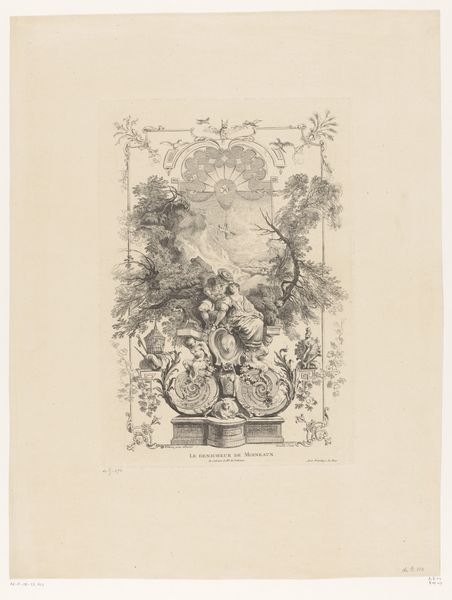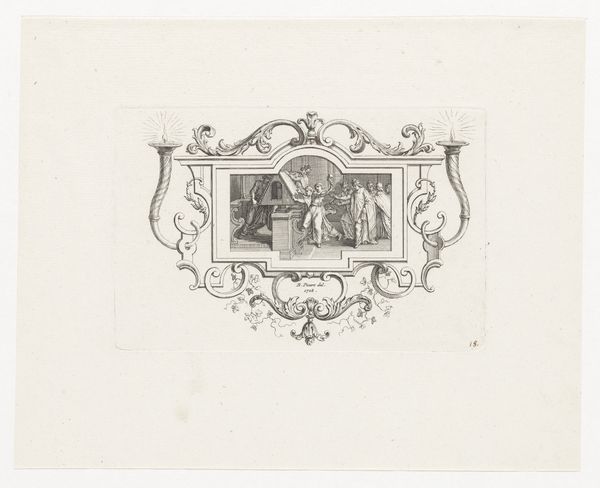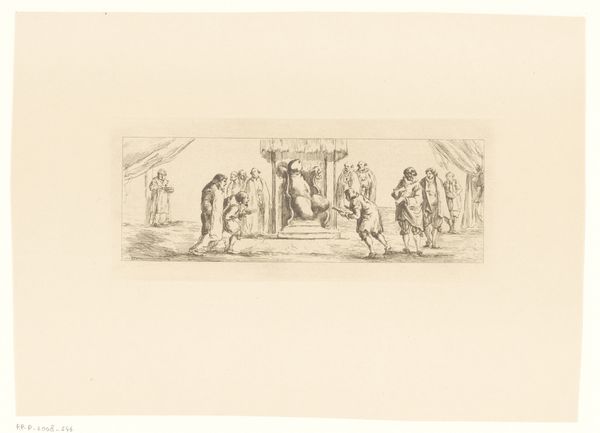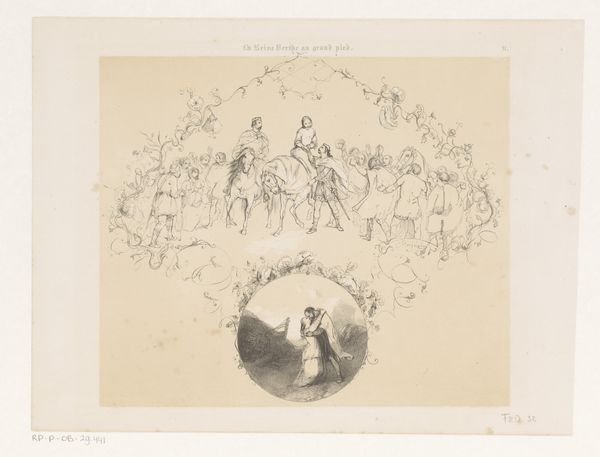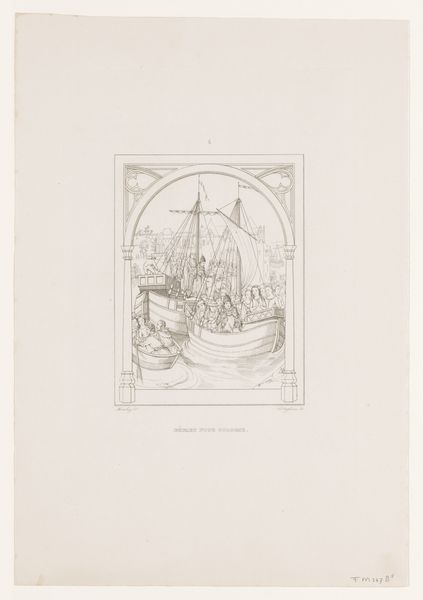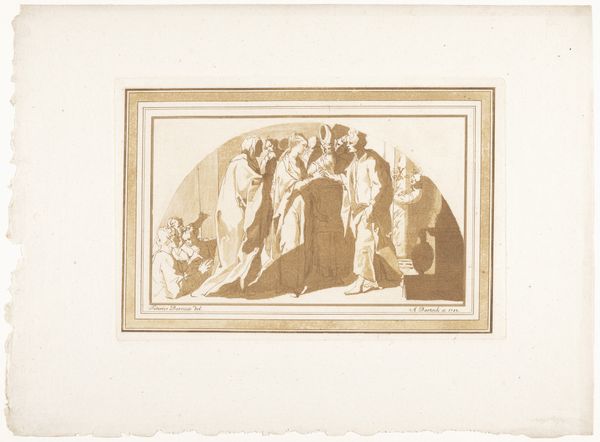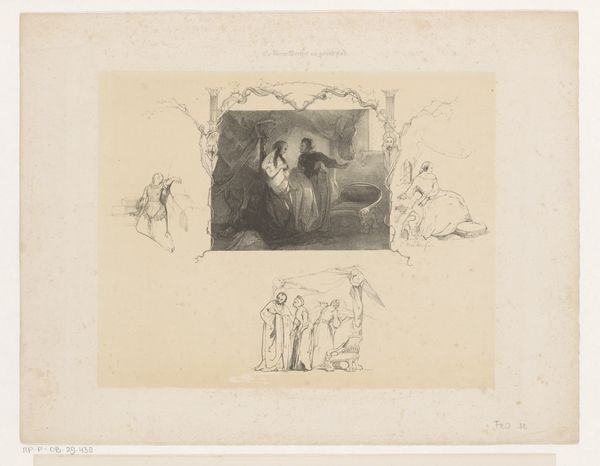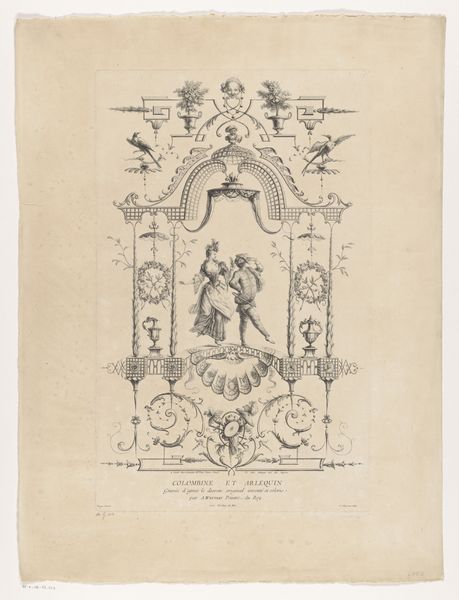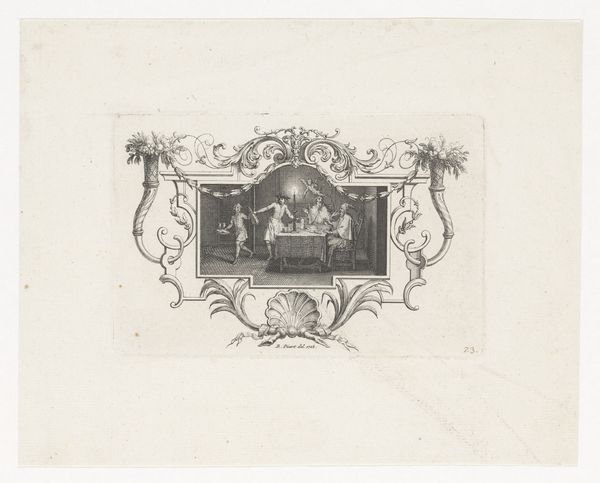
drawing, ink, pen
#
portrait
#
drawing
#
medieval
#
pencil sketch
#
figuration
#
ink
#
pen-ink sketch
#
line
#
pen
#
history-painting
#
academic-art
Dimensions: height 272 mm, width 361 mm
Copyright: Rijks Museum: Open Domain
Curator: What strikes me immediately is the sheer delicacy of this drawing, especially considering its apparent subject. It's wispy and seems almost fragile. Editor: I'm glad you pointed that out! This drawing, "Tronende koning en koningin" or "Throned King and Queen," now residing at the Rijksmuseum, was created by Charles Rochussen before 1842. We know it employs ink, pen, and pencil. To me, that material combination offers important clues about how this artist worked. Curator: Indeed. The combination of materials allows for those very fine, detailed lines and subtle shading that brings the figures to life. I’m drawn to how the artist seems to intentionally blur boundaries, echoing Medieval styles and the more formalized conventions of academic art, yet rendered with a sense of spontaneity more associated with sketching. What was the intention of Rochussen combining those varied approaches? Editor: Rochussen, working well after the medieval period, would have been reflecting an interest in historical painting. The pen and ink suggest a revivalist approach, mimicking illuminated manuscripts, perhaps. However, that delicate pencil work you identified opens the piece up to academic interpretation and shows that he was keen on capturing both formal qualities and the textural effect on vellum of those ancient works of art. It’s important to realize, that art doesn't exist in a vacuum; that the consumption and reproduction of certain styles often reflect shifting cultural priorities. The Rijksmuseum itself provides the space where this piece is understood in context of evolving traditions. Curator: It makes me wonder how this work operated in 19th-century art markets. Was this kind of historicizing work perceived as progressive or conservative? And what was Rochussen intending to produce by conjuring historical symbolism and deploying common media like pen, ink and pencil in concert? Was it for a patron, or simply exploring production for itself? Editor: Those are important questions and I'm not sure we can answer all of those right now. However, viewing pieces like these enables us to grasp the tastes and preferences dominant within artistic circles and to reflect upon the complex socio-political meanings imbued by the history-painting style! Curator: Exactly. Seeing how an artist’s choices around humble media shape and engage with cultural contexts…well, it adds so much to what one sees in a quick glance! Editor: I agree; it has changed the way I initially interpreted the image. It really exemplifies how art builds upon, reflects, and also actively shapes historical and cultural currents!
Comments
No comments
Be the first to comment and join the conversation on the ultimate creative platform.
